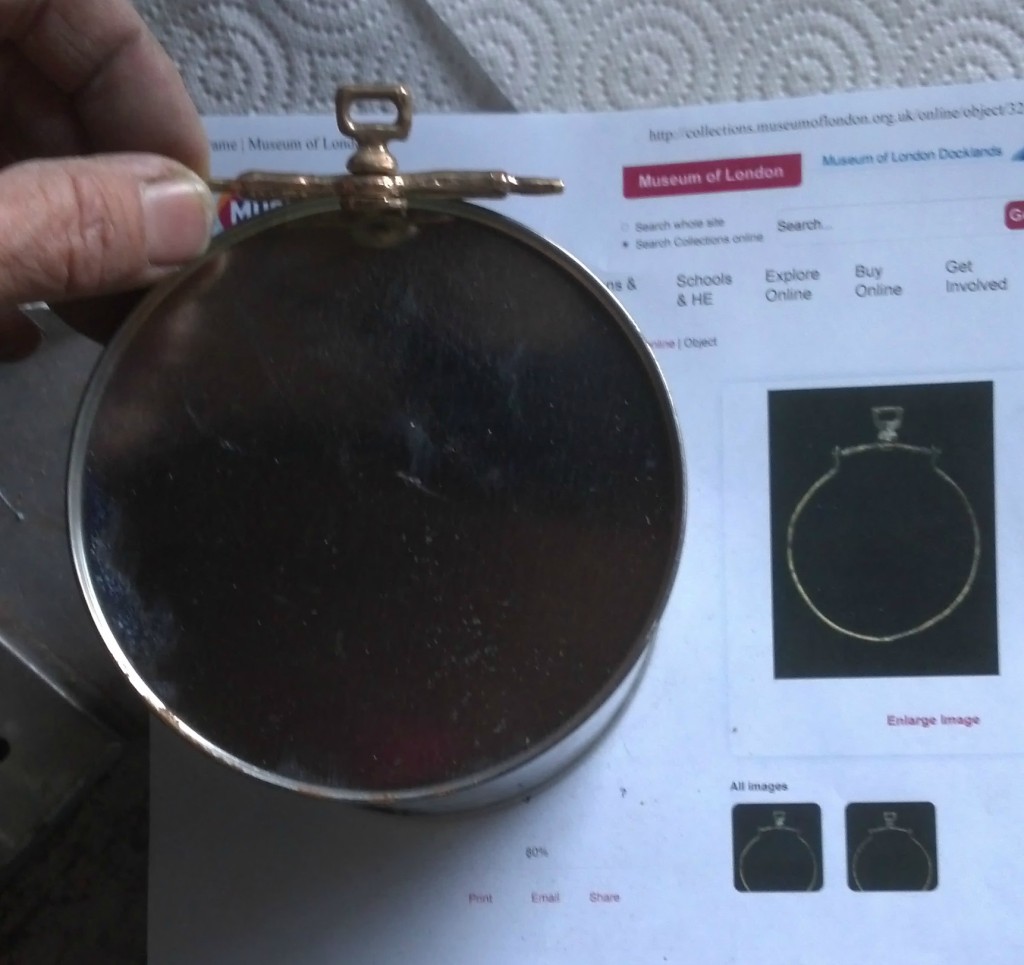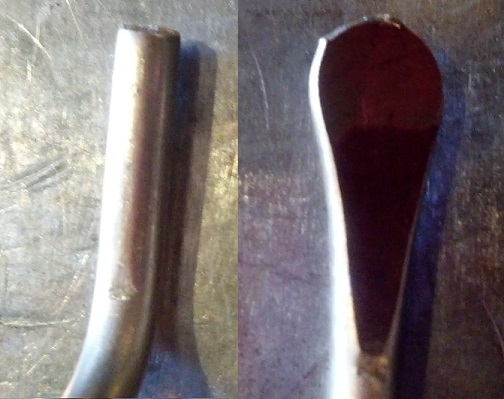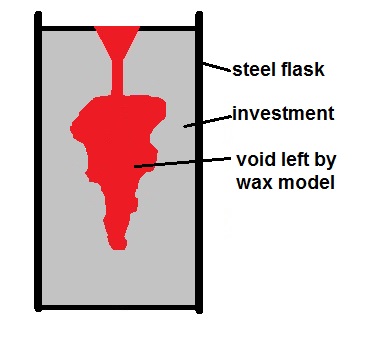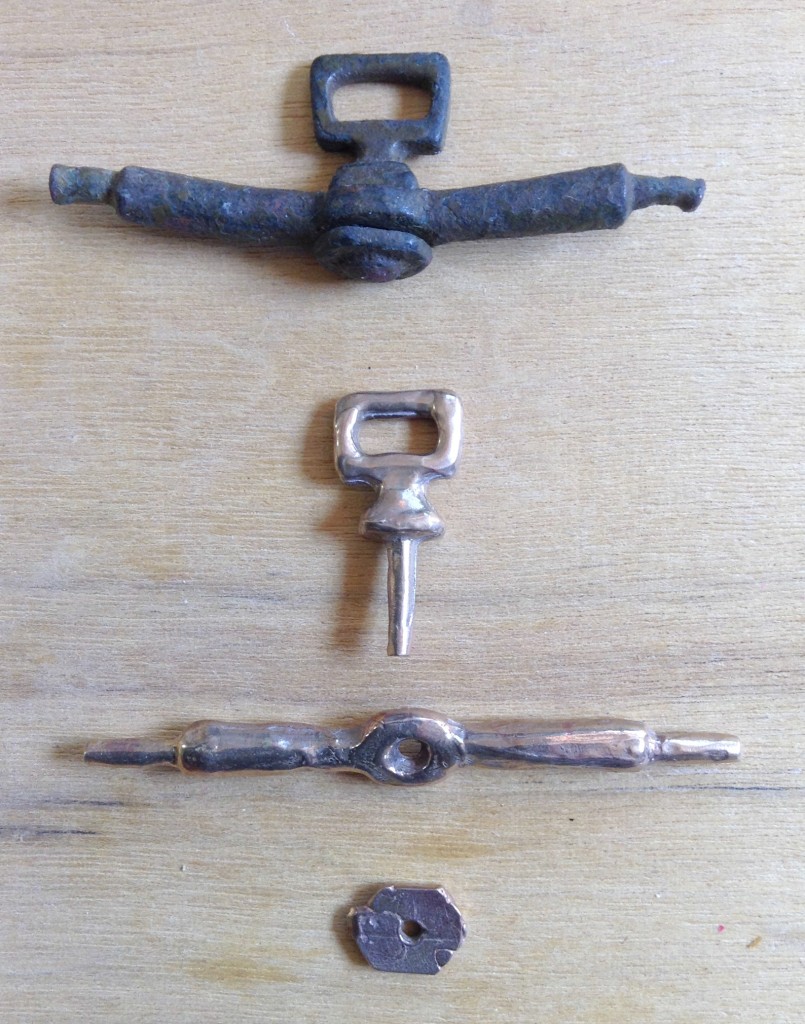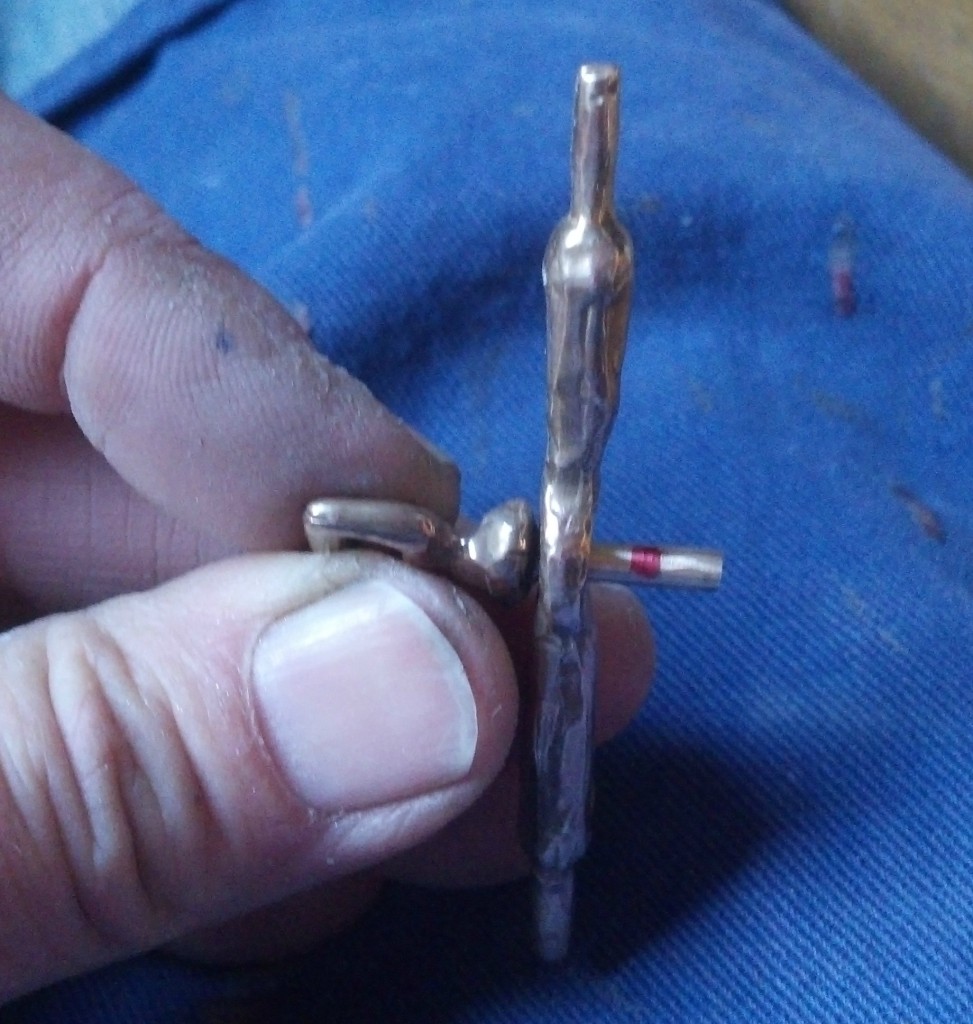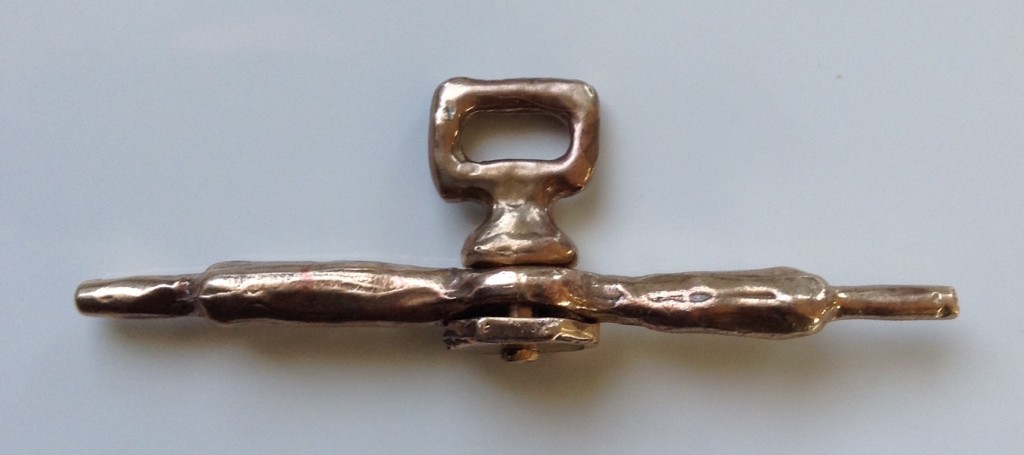Last time I put together the purse frame bar and pivot, so now it is time to add the purse frame rings.
First a confession – I am cheating by using 8 gauge bronze wire. I have seen purse frames, usually the lowest quality ones, that use plain old wire rings. I was faced purely with a time issue. With all of the events that I am currently doing there was simply no time to be able to cast the type of “chevron” shaped ring that I wanted to use, so that project will happen in the future.
Why is the chevron shape important for better quality purse rings? The previous “L” or “chevron” shaped purse rings that we looked at used part of the “L” to provide a location for holes to sew the bag of the purse to. Although this is an important benefit, it is possible to simply wrap the material of the bag around the ring and sew it in place. So why is the shape so important? Strength. A plain round wire will bend much more easily, even if it has been hammered to make it harder. The basic structure of an “L” shape makes the ring much more stiff and less susceptible to bending.
So back to my process. I looked at the purse frame from the Museum of London that had a surviving ring.
What I was looking for was the shape of the ring and the proportions of the ring to the purse bar. So I went in search of a round item that was the correct size. And here it is, a small paint can. The picture compares the can and purse bar to the picture of the purse frame at the Museum of London.
Pretty darn close. So I wrapped the 8 gauge wire around the can and started forming the tabs that will go up to the purse bar. Here they are, fresh off of the paint can with the purse frame .
So now it was time to adjust the rings so that they actually nest inside of one another and the tabs don’t interfere with one another. A little work with a pair of pliers accomplished that, and then it was time to flatten the ends of the wire rings. Here they are in progress.
Once they were flat enough I cleaned off the rough spots with a file. And checked the fit of the rings one more time.
Almost perfect! One of the tabs on the inner ring is a little too long, so I re-trimmed it and filed it again. Then it was time to create the holes that would allow the rings to fit onto the purse frame bar. Mark the location of the holes with a punch, so that the drill bit will not slide around. Then drill the holes and smooth off any burrs with a file.
And what do we get when we put it together?
We get something that looks a lot like a purse frame with rings. The fit is pretty close, just a little work with a pair of pliers will make it perfect.
Next Time: Finishing up the Frame

